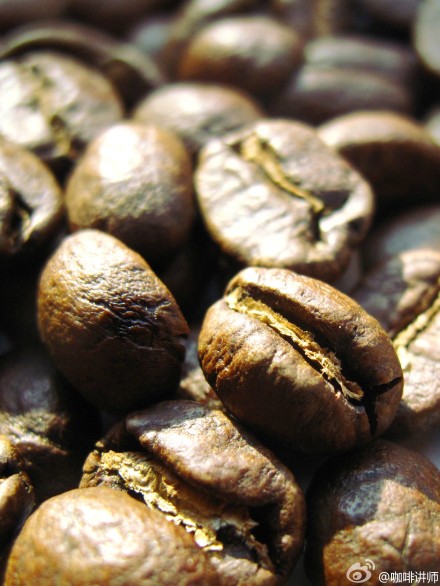Introduction and recommendation of coffee books Coffee with Tim Wendelboe

The author of this book is the 2004 WBC champion Tim Wendelboe, and the author has published both Norwegian and English versions. The Nordic countries have always been regarded as the most exquisite and exquisite areas of coffee culture in the world, but we seldom have the opportunity to see a special book on coffee written and published by the Nordic countries. this book is not only from Nordic, but also the most famous Tim Wendelboe in the Nordic coffee industry. It's great to get a glimpse of Nordic coffee culture and absorb the knowledge of experts at the same time.
When I opened the first page of the book, I didn't put it down and finished it in one breath! I had a feeling of yelling after reading it. To tell you the truth, I haven't seen a coffee book like this for a long time! there is no difficult or profound content in Tim Windberg's Coffee Coffee with Tim Wendelboe. Tim Wendelboe tells some practical coffee knowledge through this book, but it is particularly pleasant to read, because word by word in the book, we can see that Tim Wendelboe has used his own experience to explore and walk through it. Then write it in "my own point of view", sincere and simple, and speak so bluntly that it is completely different from the coffee books that are full of people and have a high repetition rate.
In the preface, Tim Wendelboe mentioned the feeling of his first exposure to coffee as a child, which was very similar to the childhood experience of David.C.Schomer, the godfather of Espresso in Seattle. They couldn't stand the feeling of a cup of bitter water at the entrance of the coffee until Tim Wendelboe went to Stockfleth's, a famous coffee shop in Oslo, to seek his first job. In the preface, Tim Wendelboe wrote: "all the coffee knowledge you read in this book will sooner or later become outdated information, even if what is written in the book is only some current basic common sense." We have been learning, even if you have been drinking coffee all your life, you should face it with humility. "how well said! This is the attitude that all coffee workers should have.
The book also has first-hand information on the processing procedures of coffee beans in the place of origin. Because Tim Wendelboe himself is quite devoted to helping to improve the quality of some coffee producing areas, everything about the place of origin has been written and described clearly and fluently, and with some of his personal thoughts, even people who are already familiar with coffee bean processing procedures can still learn something from reading this book. Tim Wendelboe uses strawberries as an analogy to explain why climate has a decisive effect on the quality of agricultural products and the concept of season. His explanation is easy to understand.
Tim Wendelboe also talked about this important idea about the coffee roasting unit: "even if you follow the standard procedure, every day, every batch of roasted coffee." It can't be exactly the same. "the key to being a coffee roaster is to Try&Error constantly, and then you can adjust the baking parameters according to the actual performance of the cup. "I totally agree with these two words, and nodding is like messing with garlic! In this chapter, Tim Wendelboe also mentions the important effect of the cooling of coffee beans on storage, which is rarely mentioned in other coffee books.
Next, let's talk about the taste and choice of coffee, as well as the elimination of some myths. In this unit, Tim Wendelboe says bluntly what he learned after visiting Jamaica in search of good coffee. He thinks that JBM in Jamaica is "mostly just boring coffee" (mostly boring coffee). He thinks that JBM has only a little aroma and flavor, but it hangs at a high price. Instead of buying Blue Mountain, consumers should spend their money on good bean grinders or resell high-priced Latin American beans with significantly better quality. Tim Wendelboe also advises consumers not to waste money on so-called civet coffee (Kopi Luwak). Instead of spending money on visiting coffee producing areas to see how good coffee is made, it is far better to spend a lot of money on cat poop coffee. For the Panamanian jade villa garden geisha (Hacienda LaEsmeralda Geisha) coffee, which has hit record highs in recent years, Tim Wendelboe believes that although it is expensive, it is worth every dollar spent by consumers, because it is really good coffee, every penny.
It is a pity that Tim Wendelboe obviously does not understand the traditional Italian coffee culture and there is obviously some misunderstanding when writing about southern European / Italian coffee. I think this is understandable, because southern Europe / Italy traditionally drinks RoastFlavor, which is completely different from the native flavor that northern Europeans love (Originflavor). Of course, they are prone to cognitive misunderstandings.
At the end of the book, I spend some space explaining several ways of brewing coffee. There are clear explanations and pictures. The most important thing is that the explanatory text points to the point, unlike the boring dogma of common coffee books. In particular, Tim Wendelboe teaches you to extract coffee with a teapot. I think it is a very interesting and informative unit! In short, this is a good book, recommended to friends who are interested in knowing more about coffee!
Important Notice :
前街咖啡 FrontStreet Coffee has moved to new addredd:
FrontStreet Coffee Address: 315,Donghua East Road,GuangZhou
Tel:020 38364473
- Prev

Summary of coffee cup testing experience of boutique coffee knowledge
Whenever you get a bag of untasted coffee beans, the coffee cup tester will taste them in the following ways. Of course, this practice is not necessarily the most ideal, or meets some industry standards, it's just my personal taste style (tasting profile)! The purpose of tasting is to study and learn, and if you are not in the coffee industry, this method may not be appropriate.
- Next

A way of making coffee drinks. Ice drop coffee.
Ice drop coffee, also known as water drop coffee, ice brewed coffee, is a way to make coffee drinks. Ice drop coffee uses ice water, cold water or ice cubes to extract coffee, which is very slow and often takes hours, so ice drop coffee is more expensive. Ice droplets were invented in the Netherlands, and the common iced coffee drip filter consists of 3-4 layers of glass containers mounted on wooden seats. System
Related
- Beginners will see the "Coffee pull flower" guide!
- What is the difference between ice blog purified milk and ordinary milk coffee?
- Why is the Philippines the largest producer of crops in Liberia?
- For coffee extraction, should the fine powder be retained?
- How does extracted espresso fill pressed powder? How much strength does it take to press the powder?
- How to make jasmine cold extract coffee? Is the jasmine + latte good?
- Will this little toy really make the coffee taste better? How does Lily Drip affect coffee extraction?
- Will the action of slapping the filter cup also affect coffee extraction?
- What's the difference between powder-to-water ratio and powder-to-liquid ratio?
- What is the Ethiopian local species? What does it have to do with Heirloom native species?

